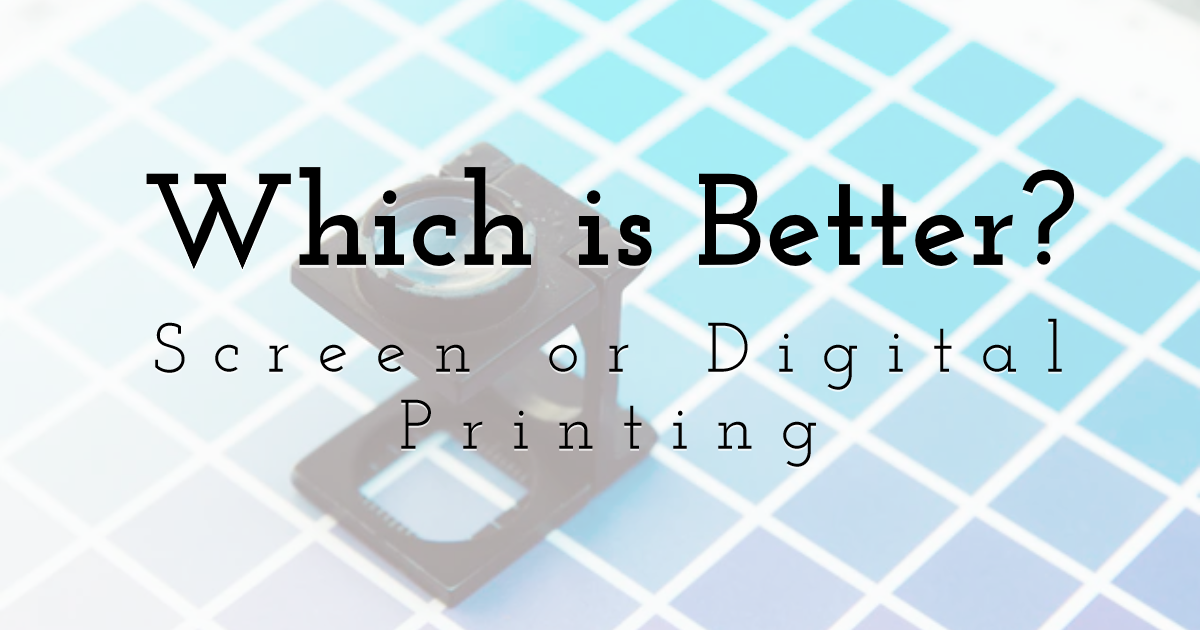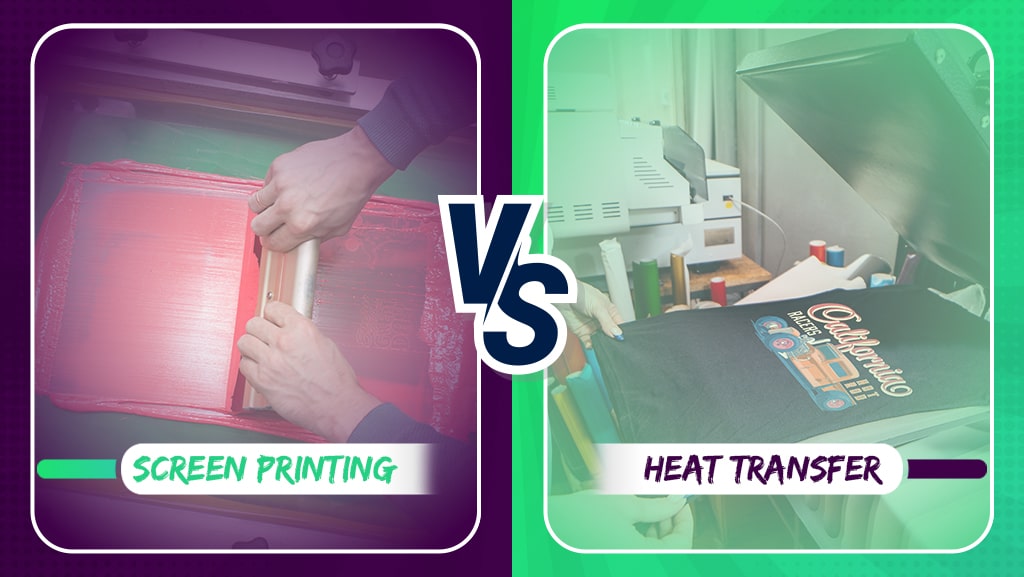The 8-Minute Rule for Tx Tees
The 8-Minute Rule for Tx Tees
Blog Article
The 2-Minute Rule for Tx Tees
Table of ContentsThe smart Trick of Tx Tees That Nobody is DiscussingThe 8-Second Trick For Tx TeesSee This Report on Tx TeesThe Facts About Tx Tees RevealedTx Tees Fundamentals ExplainedTx Tees Things To Know Before You Get ThisThe Ultimate Guide To Tx Tees
Include up other prices, like the number of utilities it takes to run the store and the expense of ink and emulsion per layout. Take the print below.The solution needs to only be a few cents considering that you 'd only need to layer one display for this job. Exactly how much should you charge per t shirt to make a revenue? Generally, printers attempt to make up to 45% profit on a print work. Below's a table to help you identify that: complete cost per item percent of desired profit as a decimal (example:.25 or.45) revenue made per item per job Currently let's discuss the earnings of DTF.

With DTF, you can print a handful of shirts, or simply one. Both display printing and DTF have their niches in the globe.
The Main Principles Of Tx Tees
The very best way to recognize? Ask about and see what print stores like your own are doing. custom monograming. Try both out and see which you like much better
When you're selecting what kind of printing method to make use of for publishing your artwork layouts on your garments, it's vital that you understand the differences in between these 2 methods so you can maximize outcomes while decreasing costs. Display printing is one of the most frequently utilized technique for printing styles on fabrics.
DTG printing is additionally referred to as spot or straight to garment printing due to the fact that it prints only what is needed rather than making a screen as screen printers do. https://txtees02.blog.ss-blog.jp/2024-03-28?1711617286. Screen printing works by display filler squeegee display printing ink screen mesh screen, then transferring the image to garment making use of warm and/or stress
The DTG printer utilizes unique dye-sublimation inks that are applied into a pre-designed image by an electronic printing system. The inks become component of the textile, permitting dynamic colors and phenomenal detail. It's also referred to as place or straight to garment printing since it prints only what is required rather than making a display as screen printers do.
Some Known Questions About Tx Tees.
First, it's much quicker - you can print a fullcolor photo in minutes, as opposed to hours for screen printing. Second, there's no established time or costs entailed - you can print any kind of design you like, without having to create a screen initially. Third, there's no waste - since screen printers screen print one layout at once, they have to screen each color separately.
The paper is really pricey and can only be made use of as soon as. Once it's printed on, it needs to be thrown out. - The first purchase price is less than the in advance investment of DTG printers- You can print multi-color styles one screen each time as opposed to having to publish each color individually like DTG printing.

The 6-Minute Rule for Tx Tees
Instead of using display mesh as display printers do, dye sublimation printers utilize laser innovation to move your images onto garments or paper. A heat process moves the color from its solid-state directly right into the gas stage which in turn merges it onto fabric substrates when they are rapidly heated to high temperatures under high stress.
Sublimation printing is environmentally friendly. It utilizes much less water than screenprinting, and since it doesn't include making use of unsafe solvents, it's risk-free for all sorts of garments. The color sublimation inks are also odor free when treated, unlike display printers that make use of harmful chemicals during the screen printing process that leave behind an unpleasant odor.
They also save money on costly equipment like exposure units because dye sublimation printers don't require a UV exposure unit or a flash cure stove that is typically used in screen printing (screen printing shop). What is straight to garment printing (DTG Printing)? DTG printing is an electronic screenprinting procedure that publishes directly onto material using specialized inkjet printers
Get This Report on Tx Tees
DTG printing provides several benefits over conventional screenprinting, consisting of the ability to publish photo high quality images, higher color vibrancy, and the capacity to print layouts on darker materials. DTG printers work by heating up the textile ink up until it becomes a gas. The gas after that permeates the textile, bonding with the fibers to create a long-term print.

Display printers just prepare their screen after that begin publishing up until they run out of product or ink.- There is a large variety of knowledgeable screen printers all over the globe, which can be valuable for newbies. - It's a slower procedure - display printers frequently need to wait for the ink to completely dry before they can print the following color- Screen printers require manual work, so there's a greater discovering contour and it takes longer to generate a high-quality layout- Display printing isn't as precise as DTG printing, so you may get some "bleeding" of shades from one part of the image onto an additional if not done correctly.
9 Easy Facts About Tx Tees Described
Nonetheless, rather than making use of screen mesh as display printers do, color sublimation printers utilize laser technology to move your images onto garments or paper. A heat procedure moves the dye from its solid-state directly right into the gas phase which subsequently fuses it onto material substratums when they are rapidly heated up to heats under high pressure.
Sublimation printing is eco-friendly. It utilizes much less water than screenprinting, and because it does not entail making use of unsafe solvents, it's safe for all sorts of clothing. The color sublimation inks are also odor free when healed, unlike display printers that make use of unsafe chemicals throughout the display printing procedure that leave behind an unpleasant odor.
They additionally conserve cash on costly devices like direct exposure devices because dye sublimation printers don't call for a UV direct exposure unit or a flash cure oven that is commonly made use of in screen printing. What is direct to garment printing (DTG Printing)? DTG printing is a digital screenprinting process that prints directly onto fabric utilizing specialized inkjet printers.
Some Known Factual Statements About Tx Tees
DTG printing provides several benefits over typical screenprinting, consisting of the capability to print photographic top quality photos, higher color vibrancy, and the ability to publish styles on darker fabrics. DTG printers work by warming the fabric ink up until it develops into a gas. The gas after that penetrates the fabric, bonding with the fibers to create an irreversible print.
Report this page